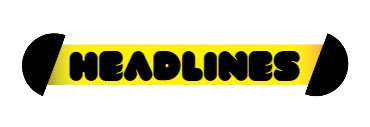Introduction: What Is A Mortgage?
A mortgage is a specialized loan used to finance the purchase of real estate. In this arrangement, a borrower takes out a loan from a lender, using the property as collateral to secure the loan. The borrower commits to repaying the borrowed amount over a predetermined period, typically including interest. This setup allows individuals and businesses to acquire property without needing the full amount upfront.
If the borrower fails to meet the repayment terms, the lender has the right to seize the property through foreclosure. This process underscores the importance of maintaining regular payments to avoid losing the property. Mortgages are essential for enabling property acquisition and are a key component of real estate transactions.
Types of Mortgages: Exploring Your Options

1. Fixed-Rate Mortgages
- Overview: Fixed-rate mortgages are loans where the interest rate remains constant throughout the loan term. This stability ensures predictable monthly payments and simplifies budgeting.
- Advantages: Consistent payments provide financial predictability and protection from interest rate increases.
- Disadvantages: Initial rates may be higher than those of adjustable-rate mortgages.
2. Adjustable-Rate Mortgages (ARMs)
- Overview: ARMs have interest rates that adjust periodically based on market conditions. They typically start with a lower initial rate that may change over time.
- Advantages: Lower initial rates can result in initial cost savings.
- Disadvantages: Payments can fluctuate, potentially increasing financial uncertainty.
3. Interest-Only Mortgages
- Overview: For an initial period, borrowers only pay interest on the loan, with principal payments starting later. This can reduce initial payments but may lead to larger future payments.
- Advantages: Lower initial payments can improve cash flow.
- Disadvantages: No principal reduction during the interest-only period can lead to a larger remaining balance.
4. FHA Loans
- Overview: FHA loans are backed by the Federal Housing Administration and are intended for borrowers with lower credit scores or minimal down payments.
- Advantages: Lower down payment requirements and more flexible credit standards.
- Disadvantages: Mortgage insurance premiums can increase overall costs.
5. VA Loans
- Overview: VA loans are available to veterans, active-duty service members, and eligible family members, guaranteed by the Department of Veterans Affairs.
- Advantages: No down payment is required, and interest rates are competitive.
- Disadvantages: A funding fee is required, and eligibility criteria must be met.
How Mortgages Work: The Process And Components

1. The Mortgage Application Process
Pre-approval involves assessing your financial situation to determine how much you can borrow, which simplifies the house-hunting process by setting a clear budget. Additionally, choosing a lender requires comparing different options to secure the most favorable mortgage terms and interest rates, ensuring that you find a loan that best suits your financial needs and goals.
2. Key Mortgage Terms
Principal: The initial amount borrowed, which must be repaid.
Interest Rate: The cost of borrowing, expressed as a percentage of the principal.
Term: The length of time over which the loan will be repaid, commonly 15, 20, or 30 years.
Amortization: The process of paying off the loan with regular payments of principal and interest over the term.
Down Payment: The initial payment made towards the property, reducing the amount borrowed.
3. Monthly Mortgage Payments and Associated Costs
Principal and Interest: Regular payments towards the loan balance and the cost of borrowing.
Property Taxes: Taxes paid to local governments based on the property’s assessed value.
Homeowners Insurance: Coverage for potential damage to the property and liability protection.
Private Mortgage Insurance (PMI): Required for loans with a down payment of less than 20%, protecting the lender in case of default.
4. Additional Costs
Closing Costs: Fees associated with finalizing the mortgage, including appraisal, inspection, and legal costs.
Maintenance and Repairs: Ongoing expenses for the upkeep and repair of the property.
Refinancing And Loan Modifications: Options For Current Homeowners
Refinancing your mortgage entails securing a new loan to replace an existing one, aiming to obtain more favorable terms or lower interest rates. This can include rate-and-term refinancing, which alters the interest rate or the duration of the loan, or cash-out refinancing, where you borrow against your home’s equity to access additional funds.
Loan modifications, on the other hand, involve altering the terms of your current mortgage to make payments more manageable. This can involve extending the loan term or reducing the interest rate, providing relief if you are struggling with your existing payment schedule and need to adjust the terms to better fit your financial situation.
Advantages And Disadvantages Of Mortgages

1. Advantages
Mortgages make homeownership achievable by allowing buyers to acquire property without paying the full amount upfront. Fixed-rate mortgages offer the benefit of stable, predictable monthly payments, simplifying budgeting and financial planning. Additionally, mortgage interest may be tax-deductible, potentially providing tax advantages and further reducing the overall cost of borrowing.
2. Disadvantages
Mortgages involve a long-term financial commitment, often spanning 15 to 30 years, which can be a significant burden. Over this period, the total interest paid can accumulate to a substantial amount, increasing the overall cost of the loan. Additionally, failing to meet mortgage payments carries the risk of foreclosure, where the lender can seize the property, leading to a potential loss of the home.
Mortgage Terminology Explained: Key Terms To Know

An amortization schedule outlines how each mortgage payment is divided between principal and interest throughout the loan’s term, helping borrowers understand their repayment progress and how much they will owe over time. An escrow account, managed by the lender, collects and holds funds for property taxes and insurance to ensure these payments are made on time and reduce the risk of lapses.
Equity represents the difference between the property’s market value and the remaining mortgage balance, indicating how much ownership a borrower has in their home. The loan-to-value ratio (LTV) compares the mortgage amount to the appraised value of the property, helping lenders assess the risk of the loan and determine the terms and conditions.
Key Features Of Mortgages
- Fixed or Adjustable Rates: Fixed-rate mortgages have stable payments, while adjustable-rate mortgages vary over time.
- Pre-Approval: Determines your borrowing limit before house hunting.
- Down Payment: Reduces the loan amount needed.
- Amortization Schedule: Breaks down payments into principal and interest.
- Escrow Account: Manages funds for taxes and insurance.
- PMI: Insurance for loans with down payments under 20%.
- Equity: The property’s value minus the mortgage balance.
- Loan-to-Value Ratio (LTV): Measures the loan amount against the property’s value.
- Refinancing: Replaces an existing loan for better terms or cash.
- Loan Modifications: Adjusts loan terms to improve payment conditions.
FAQs About Mortgages
What is a mortgage?
A mortgage is a loan for buying property, where the property itself serves as collateral. The borrower repays the loan over time with interest.
What types of mortgages are there?
Common types include fixed-rate (constant interest), adjustable-rate (changing interest), interest-only (initially paying only interest), FHA (for low credit), and VA (for veterans with no down payment).
How does the mortgage application process work?
It involves getting pre-approved to determine your borrowing limit, choosing a lender, and applying with your financial details.
What are key mortgage terms?
Key terms include principal (borrowed amount), interest rate (cost of borrowing), term (loan length), amortization (payment breakdown), and down payment (initial payment).
What additional costs are involved?
Additional costs include closing costs, property taxes, homeowners insurance, maintenance, and PMI if the down payment is under 20%.
What is refinancing?
Refinancing is taking a new mortgage to replace an existing one, often to get better rates or terms.
What are loan modifications?
Loan modifications adjust the terms of your current mortgage to make payments easier, like extending the term or lowering the interest rate.
Conclusion
Understanding mortgages is crucial for anyone looking to finance real estate. Mortgages enable individuals and businesses to acquire property by borrowing money from lenders, with the property itself serving as collateral. Various types of mortgages cater to different needs, from fixed-rate stability to the flexibility of adjustable rates. Knowing key terms like principal, interest rate, and amortization helps in managing mortgage payments effectively.
While mortgages make homeownership accessible and offer benefits like predictable payments and potential tax deductions, they also come with long-term commitments and potential costs. Additional expenses, such as closing costs and PMI, along with the risk of foreclosure if payments are missed, underscore the importance of careful financial planning. Refinancing and loan modifications offer options for improving mortgage terms or managing payment difficulties. Overall, understanding these aspects can help borrowers make informed decisions and effectively manage their mortgage throughout its term.
Stay in touch for more updates and alerts visit: Headlines Llc!



